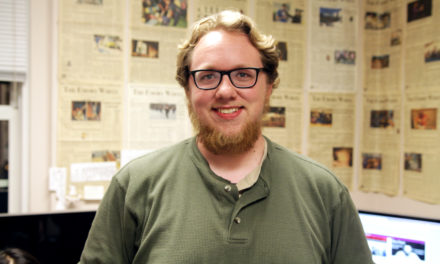COVID-19 has exposed Americans’ unwavering individualism. Americans have screamed in outrage, harassed employees and started protests nationwide, because they felt oppressed by mask requirements. If only they had this same passion for championing racial justice and protecting the lives of their fellow Americans.
But hope often springs from unexpected places, and in such a dark time, we’ve seen Americans mobilize to support their communities. When the pandemic first hit the U.S, recovery appeared an impossible dream. Frontline workers had to choose between their paychecks and putting their lives on the line with a fourth of U.S. adults reporting someone in their household losing their job. Vulnerable populations were put at risk from basic tasks such as going to the grocery store. Yet an unexpected hero emerged: mutual aid, the process of redistributing resources and expending aid through community-based initiatives.
In New York, people from all five boroughs banded together to provide relief money, childcare resources and personal protective equipment. Neighbors supported one another by running errands to the pharmacy or grocery store, and when they realized people needed even more help, they raised funds to help pay for emergency groceries. In Atlanta and Las Vegas, community fridges sprung up to combat food insecurity, allowing people to leave what they could and take what they needed. It’s through the work of local organizers that communities have weathered the pandemic despite widespread social disorder and the government’s failure to mobilize.
Historically, mutual aid has been a key method of solidarity to aid struggling communities and mitigate crises. Income inequality in the U.S. is the most stark of all the G7 nations; the top 20% of Americans earn more income than the bottom 50%. And it’s only getting worse — in the last 30 years, the wealth gap between the richest and poorest Americans has doubled. While the American Dream falsely touts the idea that anyone can be successful if they try hard enough, low-income and marginalized communities are significantly disadvantaged from the outset. It’s on us to take action — in other words, not relying on political figureheads and enacting change in our own communities.
One common alternative to mutual aid is donating to charities, but charities are often afflicted by corruption and greed, lessening the benefits they can spread. A 2013 investigation found almost 6,000 charities that use for-profit companies, meaning much of the donation is redirected toward the company instead of the cause. Of these charities, the 50 worst offenders devoted less than 4% of donations to their respective causes. For instance, Kids Wish Network gave dying children and their families less than three cents of every dollar donated. Meanwhile, their corporate solicitors received nearly $110 million from 2003 to 2013 alone. Many of the other charities, including the Youth Development Fund, deceived benefactors by keeping donated money for themselves through so-called consulting fees or soliciting funds.
And even for charities that don’t flaunt ethical guidelines, they do not always possess the social understanding of community needs. Charity boards, which are about 84% white, are often unrepresentative and thus out of touch with vulnerable populations. By contrast, mutual aid uses a bottom-up approach, which allows vulnerable communities to voice their own needs, rather than having board members decide for them. Instead of relying on inefficient third-party organizations to help those in need, we should help them directly. We can do that through mutual aid.
The COVID-19 pandemic reaffirmed the importance of mutual aid. But regardless of the state of the world, we should stand together in solidarity and embrace mutual aid. For low-income, Black, Indigenous and people of color, mutual aid is necessary not only during a pandemic, but in any iteration of what comes next. Mutual aid should be an evolving yet consistent pathway to meeting communities’ needs.
This holiday season, consider giving back through mutual aid. The next time you see a GoFundMe page or request for help on social media, don’t just scroll past it. Find your local mutual aid network and see how you can help; if one doesn’t exist nearby, consider starting your own. Mutual aid doesn’t have to be elaborate — it can be as simple as donating to your local food bank or helping your elderly neighbors pick up groceries. As U.S. residents, we have a moral duty to give back to our communities. As we begin a slow crawl toward the end of the pandemic, take a sigh of relief, but then get back to work. Our job is not over yet.
Brammhi Balarajan (23C) is from Las Vegas.
Brammhi’s Ballot is a biweekly column that reflects on the intersection of race, national politics and social justice. It previously covered events leading up to the 2020 general election.
Interested in writing an opinion piece for the Wheel? Contact opinion editors Ben Thomas (ben.thomas@emory.edu) and Brammhi Balarajan (brammhi.mathura.balarajan@emory.edu).
Brammhi Balarajan (23C) is from Las Vegas, majoring in political science and English and creative writing. She is the Editor-in-Chief of The Emory Wheel. Previously, her column "Brammhi's Ballot" won first place nationally with the Society of Professional Journalists. She has also interned with the Georgia Voice.




